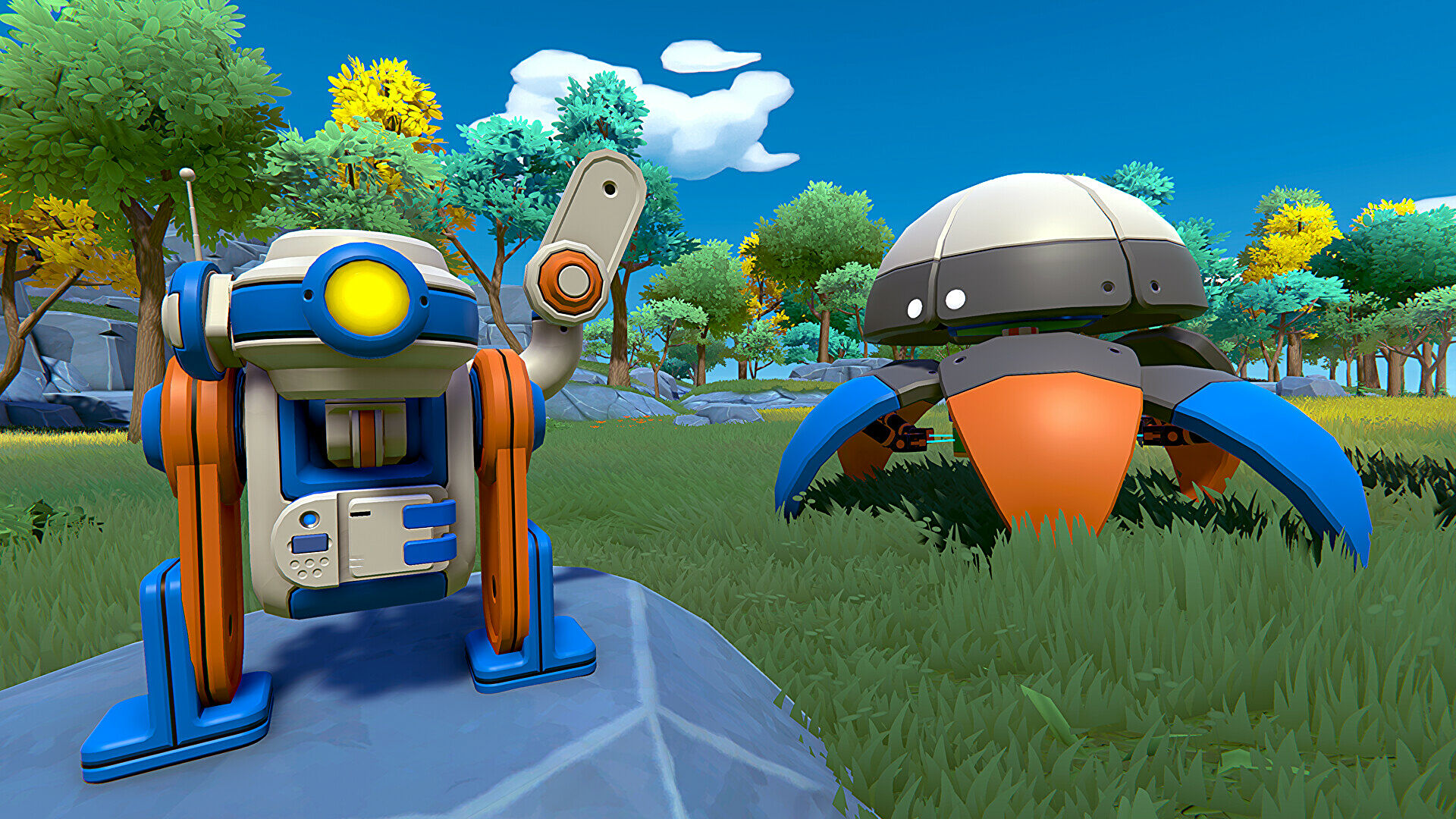
I had an interview with the team behind Plasma. Sadly, I listened back to the transcript and it’s fifteen minutes of me laughing with delight, while heavy aircraft are clearly going through maneuvers overhead. No matter. Plasma is dizzyingly complex, but very easy to explain. It’s an engineering sandbox game. You make stuff in a 3D world using pre-made parts and simplified code, and then you can share it with other people.
What kind of stuff? The team isn’t sure – as in, they aren’t sure where the boundaries are. People are going to make dioramas and games and working Babbage engines no doubt. Over the course of my interview I saw a working Pong machine, with a screen to play the game on and a decent run at the classic Pong cabinet. I saw a bunny robot with an emoji face and massive feet that kept falling over. I saw an articulated hand the size of a house that moved between waving and giving me a brisk thumbs-up. When doesn’t that add something to your day? Oh yes, and a horrible robot spider that had basic player-seeking capabilities.
All of this in a 3D world with gentle hills, blue skies and green grass. But how does it work? To answer this I was shown a little remote control car that could be steered with a joypad. And then the developers made a second car, shaping basic blocks, putting on an engine and wheels and a device for programming steering, and then disappearing into a sort of drag-and-drop code space in which you can cobble together inputs and outputs, and tweak endlessly if that’s your thing.





